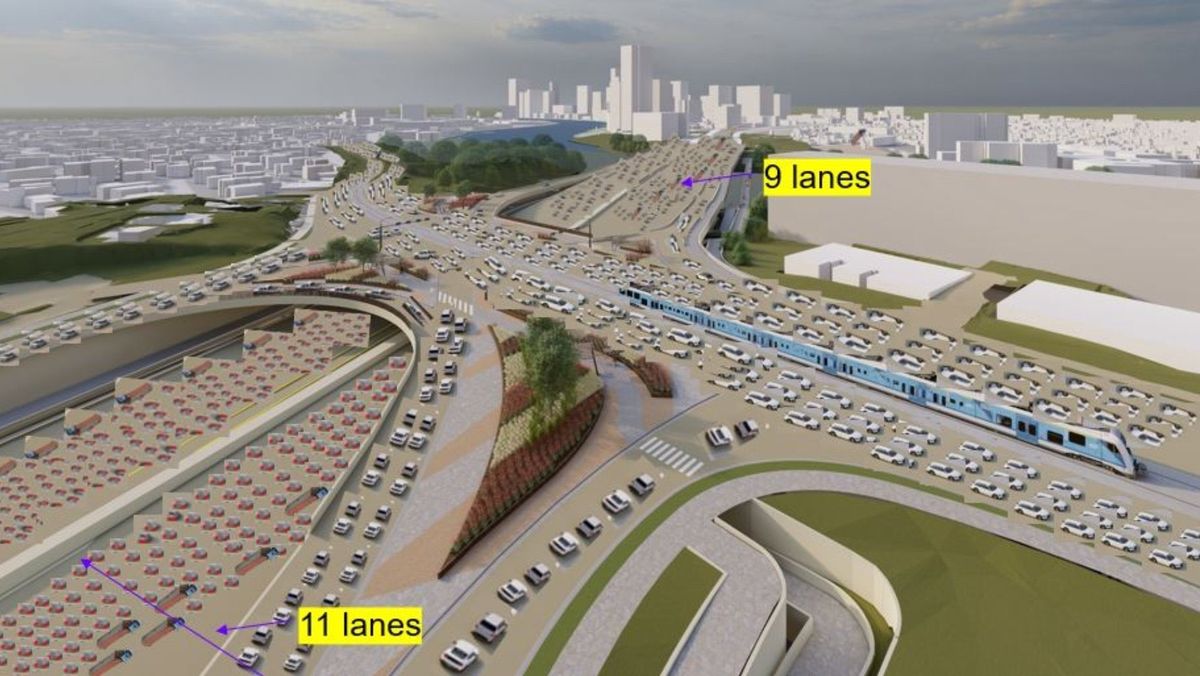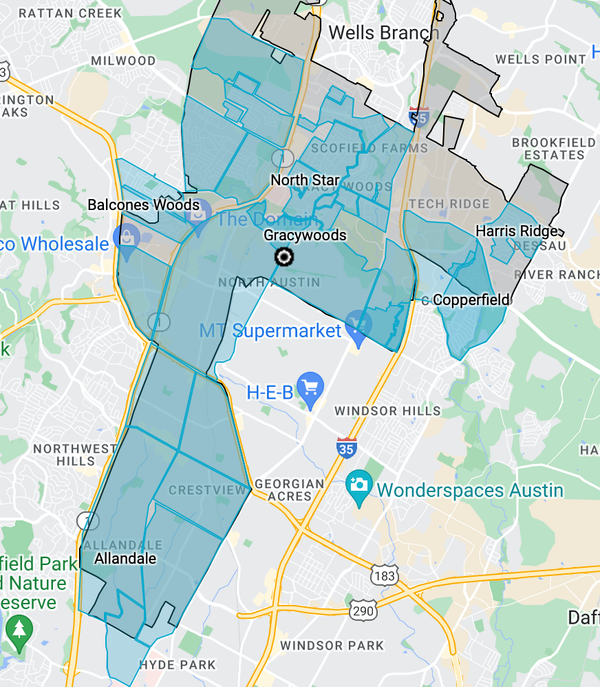The highway to hell is here
A tragic lost opportunity.

The Texas Department of Transportation has released its final Environmental Impact Statement and "record of decision" on the I-35 Capital Express Central project, the 8-mile stretch of the highway between Ben White & U.S. 290 East.
As expected, TxDOT offered a few crumbs to the city to allow local electeds to claim that they successfully fought for a better project. KUT transportation reporter Nathan Bernier summarizes:
- A new elevated bicycle and pedestrian bridge at 15th Street
- $100 million on "aesthetic enhancements" with an emphasis on east-west bridges over the interstate
- $9.4 million in funding for CapMetro to maintain bus service during construction
- A new app to notify the public about construction closures
- A community advisory committee for project updates and feedback
- A new noise barrier between I-35 and community gardens near Festival Beach
Hence the responding statements from area legislators thanking the highway department for taking into account the concerns of the community before bulldozing it.
The fundamentals haven't changed. This is still a good old fashioned highway expansion a la the Katy Freeway in Houston. It will significantly increase greenhouse gas emissions without reducing congestion. It will convert dozens of acres of tax-generating private property in one of the most valuable downtowns in the country into worthless, state-owned asphalt.
The greatest public policy sin is not the value the highway is destroying, but the value that it's preventing. Doubling down on mid-20th century planning errors imposes a major opportunity cost on future generations.
The alternatives proposed by Rethink35 or Reconnect Austin align much more closely with what many other big cities around the world are doing to shift away from auto-centric planning.
Rethink's proposal is the most radical: it would simply replace the highway entirely with an urban boulevard. Like a Congress Ave, but with better bike infrastructure and dedicated transit lanes.
Reconnect proposes keeping the highway, but putting the entire thing underground. On top would be an urban boulevard, with tunnels allowing drivers to merge onto the underground highway. These access points would eliminate the need for the frontage roads, which would then be developed into billions of dollars of housing and commerce.

The Cap & Stitch head fake
TxDOT has smartly responded to critics by pretending to adopt some of their ideas.
First, there is the "Cap & Stitch" farce. TxDOT has agreed to design the highway in a way that will allow the city of Austin to "cap" certain portions if it –– but the city has to pay for them. The estimated cost that has been thrown around is $800M, although that doesn't account for maintenance costs.
Boosters of the expansion like to portray this as allowing us to do much of what Reconnect Austin proposed. But again, the central goal of Reconnect was not to cap the highway –– it was to build a boulevard on top that would fully reconnect the city and to unlock billions of dollars of value by redeveloping the frontage roads. Cap & Stitch does neither.
Relatedly, TxDOT has responded to the desire for an urban boulevard by claiming that it is accomplishing this by putting the northbound and southbound frontage roads on one side of the highway between Cesar Chavez & Dean Keeton.


Sorry, that's not a boulevard. A boulevard is a dynamic human environment where people work, live, shop, relax. None of that will happen here.
Sinclair Black, the legendary architect and founder of Reconnect, emailed me some thoughts about TxDOT's farcical boulevard:
TxDOT is uninterested in urban development and adding value to the city. They claim that it is too expensive to place the boulevard anywhere but next to the expanded highway. The land TxDOT is planning to turn into the so-called “boulevard,” which runs along the western edge of the current highway, is of great value to the city of Austin. It is prime real estate for housing and entertainment as part of a mixed-use downtown expansion. In reality, it is TxDOT’s “boulevard” proposal that is too expensive. The poor configuration of their plan, coupled with the taking of valuable real estate downtown, creates a scenario of incalculable lost opportunity.
Boston is well known for its highway burial and cap project The Big Dig, which included a full cap and has brought the city great economic success. Austin is on the verge of its own project by TxDOT, but this huge lost opportunity may come to be known as The Big Ditch.
The right side of history
In a small moral victory, three of the four City Council members on the board of CAMPO declined to support funding the project. CAMPO is the metropolitan planning organization set up to allocate federal transportation funds in the Austin metro area. I-35 is a federally-funded project, after all.
Vanessa Fuentes and Natasha Harper-Madison voted against, while Paige Ellis abstained. Only Alison Alter voted in favor, along with the other elected officials on the board who represent other jurisdictions in Central Texas.
An aide to Mayor Kirk Watson, who devoted much of his career in the Lege to getting this project funded, reached out to Council members before the vote but did not engage in arm-twisting, according to multiple City Hall sources. He would have liked their votes, but he didn't need them.
Could the city do anything?
Does the city have the power to stop this project? It doesn't have any official power. But what it does have is a bully pulpit, but nobody on City Council appears too interested in using it.
If anything stops the expansion, it will be a lawsuit from an advocacy group.




